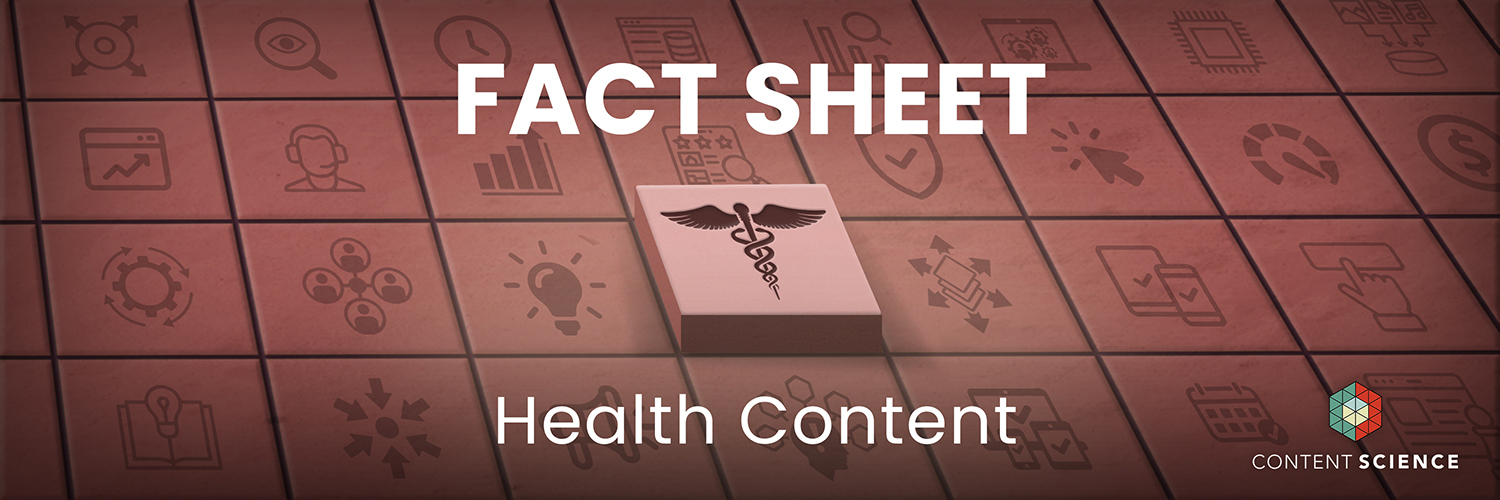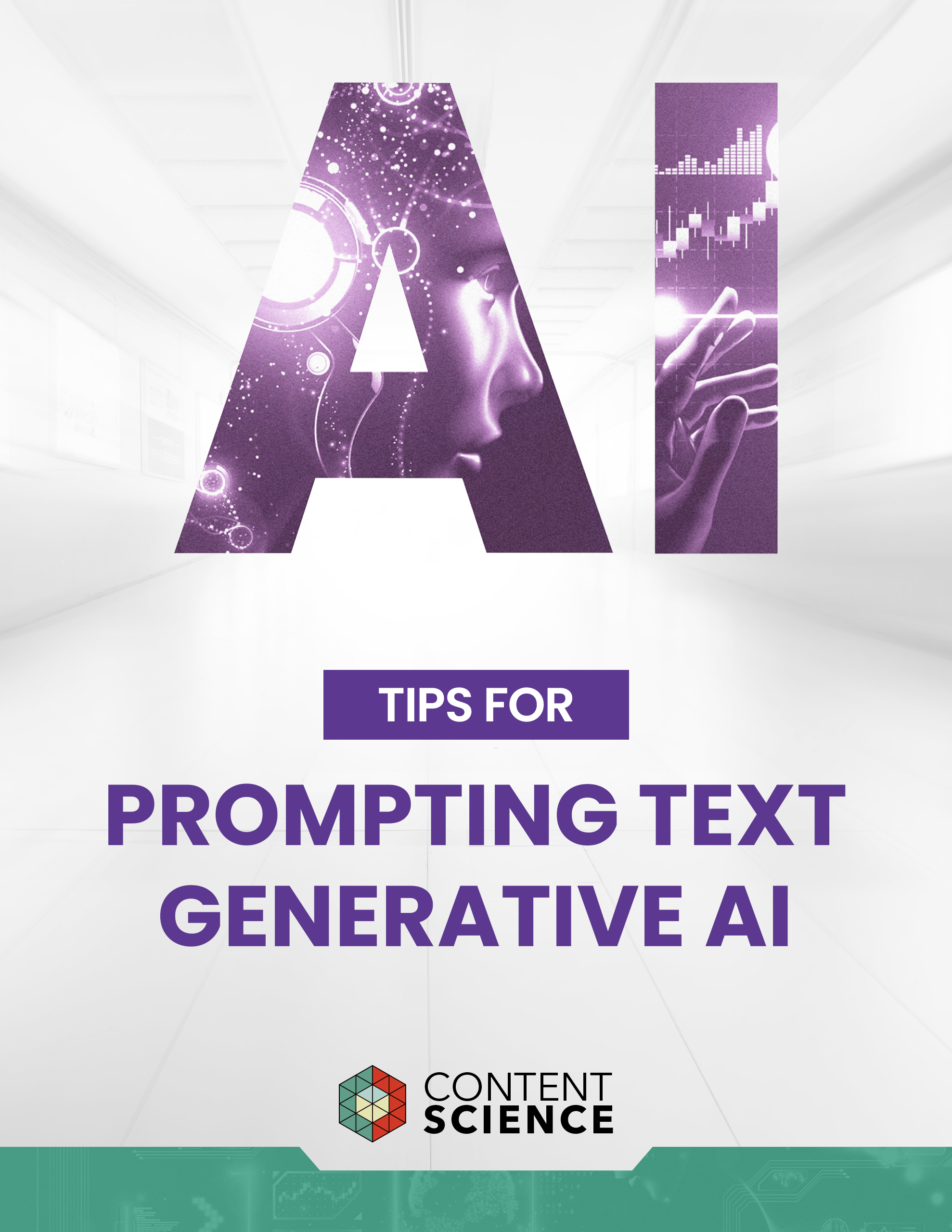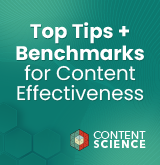
Health content is a big deal for both individuals and organizations. Consumers seek health content more now than ever, whether to learn more about a virus outbreak, better understand a diagnosis, research new insights about mental health, or explore how to live better, longer. At the same time, every type of company and organization related to health needs content to function, whether to remind patients of appointments, assist or guide employees, take innovative drugs and products to market faster, or recruit participants for research. Let’s take a closer look at recent facts about the current state and future of health content.
User Behavior and Expectations Surrounding Health Content
Most Americans go online for health information. According to the 2022 National Health Interview Survey, 58.5% of U.S. adults used the Internet to look for health or medical information in the past 12 months. — Centers for Disease Control and Prevention

Consumers want digital healthcare choices. About 70% of consumers say they will likely use digital health solutions in the future. — CTA Driving Consumer Adoption of Health Resources
Many consumers track health digitally. 40% of US adults report using health applications and 35% report using some sort of health wearable. — Morning Consult
Diet and nutrition most popular for online health information seekers. Among survey participants who searched for health information online, the top 4 search topics were diet/nutrition, exercises, medicines, and quick remedies. — Electronic Health Behaviors Among U.S. Adults With Chronic Disease: Cross-Sectional Survey
Americans often search for information on minor ailments. In 2023, Google users in the United States wanted to know more about strep throat, how to lower cholesterol, and what helps with bloating. — CNN
Tailoring messages to align with cultural preferences and sensitivities enhances the likelihood of positive reception and engagement. Plain language, transcreation, and cultural nuances are integral components of this process, ensuring that health information is accessible, relatable, and impactful for all individuals. As we strive for health equity, let us recognize the power of words to bridge gaps and build a healthier society. — Juviza Rodriguez, Sr Director, March of Dimes
Americans rely on WebMD. In December 2023 webmd.com received 129.03 million visits with the average session lasting nearly 9 minutes. Compared to November, traffic to webmd.com has increased by 9.35%. — SEMRush
Americans are searching online for mental health help. Between April 2022 and March 2023, Americans search for mental health resources on average 200,000 times a month. This was more than double the number of searches of the next country, the Philippines, which searched for mental health resources more than 82,000 times a month. — Statista
State of Health Content and Current Challenges
Fake health news has infiltrated social media. Analysis of known bot datasets found up to 66% of bots discussing COVID-19, indicating their heavy involvement in spreading pandemic (mis)information. Strategies used by bots to spread misinformation include amplification, phishing links, discrediting legitimate sources, and promoting unproven treatments. — Journal of Medical Internet Research
Misinformation is a trending concern for content creators. Nearly 30% of content creators said that combating misinformation is a top priority for their operation. — What Makes Content Operations Successful? 2023 Full Report
Confidence in identifying AI generated content varies. 54% of consumers claim to know when they are reading content written by AI, 26% claim to not know, and 20% say they are unsure. — Forbes Advisor
False beliefs about health information are prevalent. 78% of Americans believe at least one false statement about COVID-19. — State of Content 2023 Webinar Recording
Increase in searches for health information and confidence in health knowledge: Since before the pandemic, people are now 3.4 times more likely to be educating themselves on health issues. 44% of respondents ages 18-34 believe that, with research, the average person can know as much as a doctor. — 2023 Edelman Trust Barometer
In some organizations, content might be really core to their mission or what they need to do. In some cases, it might be more removed. A key step is figuring out what is the role of content in your business and the right level of time and resource investment that should be spent. So I think one struggle is figuring out the right level, which is where people can get stuck spinning their wheels. And then of course, the workflow involved in content can be really challenging. — Lymari Morales, Director, Bloomberg School of Public Health
51% of social media posts associated with vaccines contained health misinformation. Health misinformation was also found in posts about COVID-19 (28.8%) and in posts related to the pandemic (60%). 20% to 30% of YouTube videos about emerging infectious diseases contained health misinformation. — World Health Organization
Providers have mixed rates of adoption for digital services. 67% of physicians have adopted video visits. 30% have adopted texting or virtually chatting with patients. Only 4% have integrated data from patient wearables into patient medical records. — 2023 Global Health Care Outlook, Deloitte
An estimated 70% of U.S. health care organizations use social media, with Facebook, Twitter, and YouTube being the most popular. Blogs are also used by many medical centers and hospitals. — Social Media and Health Care Professionals: Benefits, Risks, and Best Practices, National Institutes of Health
Moving the Needle on Health Content Effectiveness
While healthcare organizations and health news outlets alike continue to face health content challenges, there are many opportunities for them to do better—from taking full advantage of what digital has to offer to trying new techniques and strategies to reach key audiences.
By stepping out of our comfort zone and taking risks, we were able to achieve content goals we never before thought possible. We now know that we can publish evidence-based content in weeks rather than months. This led to a significant increase in sponsorships (a company pays to have its logo appear on content pages without having any editorial control over the content). We also saw increased interest from media outlets, with some linking back to our pages. – Paula Ludmann, American Academy of Dermatology
Healthcare ad spending is on the rise. In 2022, healthcare ad spending increased 11.5%. In 2023, spending increased 10.1%. — eMarketer
Personalization pays off for healthcare providers. When providers offer a personalized experience, 49% of patients feel like they care about earning their business and 47% are more likely to choose them as a provider. — Invoca
Because we experienced success in implementing a content strategy, internal stakeholders now include us in discussions about content during the planning process. — Lance Yoder, Oracle Cerner
Future of Health Content
The Internet of Things, virtual reality, artificial intelligence and other advancing technologies all point to a healthier, more transparent, and more valuable future for health content.
AI is being used to translate health content in videos. YouTube Health is collaborating with select health content creators to pilot an AI-powered dubbing tool – Aloud, which has recently become a part of YouTube. Making videos in multiple languages is crucial for overcoming language barriers, especially in a healthcare context, yet can be labor intensive for creators. — YouTube
There’s a lot of opportunity for innovative technologies like artificial intelligence (AI) to be a part of the equation. We do have to recognize both the benefits and risks. Leveraging the benefits of AI will be an important part of the solution. For example, there’s much potential for AI to accelerate the timely and efficient curation of evidence. — Christopher Jones, PhD, VP, Content Science
Electronic health records can change healthcare. With new electronic health record (EHR) systems, public health officials will be better prepared to manage crises, like pandemics, and proactively care for underserved populations through real-time data. Meanwhile, researchers would have access to unparalleled data, helping them find and develop new cures or treatments more quickly. — Oracle Health
Secure messaging is a growing avenue for health information. The secure messaging data tracked from 2018 to 2022 demonstrated a rise in usage from 9,378 chats per month when it went live in August 2018 to greater than 200,000 monthly messages during the pandemic when social distancing measures were enacted. — Improving Communication in a Large Urban Academic Safety Net Hospital System: Implementation of Secure Messaging
Sharing information between providers is a key value of new technologies. “Having more information shared between entities with a totally streamlined communication process helps our teams better collaborate. Expanding the use of technology has empowered our teams to focus less on administrative process and more on what matters most: our patients.” — Will Maixner, DaVita
Content-led and AI-driven transformation of end-to-end processes and experiences is happening. When Pfizer launched innovation to streamline its content supply chain and accelerate bringing drugs to market, this wise comment stood out:
Content is at the heart of that transformation. — Jane von Kirchbach, SVP Digital, Pfizer
And there’s much more potential to make health care and content more accessible through content-led and AI-driven experience. For example, take Kaiser Permanente, whose Chief Digital Officer Nari Gopala says, “More than 1 out of every 3 members who use our virtual care service use it after-hours for most clinics. And more than 92% of our members who have registered for kp.org have digitally accessed their medical records and lab results, scheduled appointments online, or virtually contacted their care team in the past year.”
Events, Resources, + More
Workshop: Are You Ready for AI?
Is your organization really ready for AI at scale? Let the Content Science team guide your leaders through assessing 4 areas of readiness.
Course: Prompting Text Generative AI
Learn how to bring out the full potential of text generative AI to create impactful content from this on-demand course.
Webinar: Benchmarks for Content Effectiveness
It's not about more content. It's about more effective content. Gain tips based on Content Science's unique research + experience.
The Ultimate Guide to End-to-End Content
Discover why + how an end-to-end approach is critical in the age of AI with this comprehensive white paper.






Comments
We invite you to share your perspective in a constructive way. To comment, please sign in or register. Our moderating team will review all comments and may edit them for clarity. Our team also may delete comments that are off-topic or disrespectful. All postings become the property of
Content Science Review.